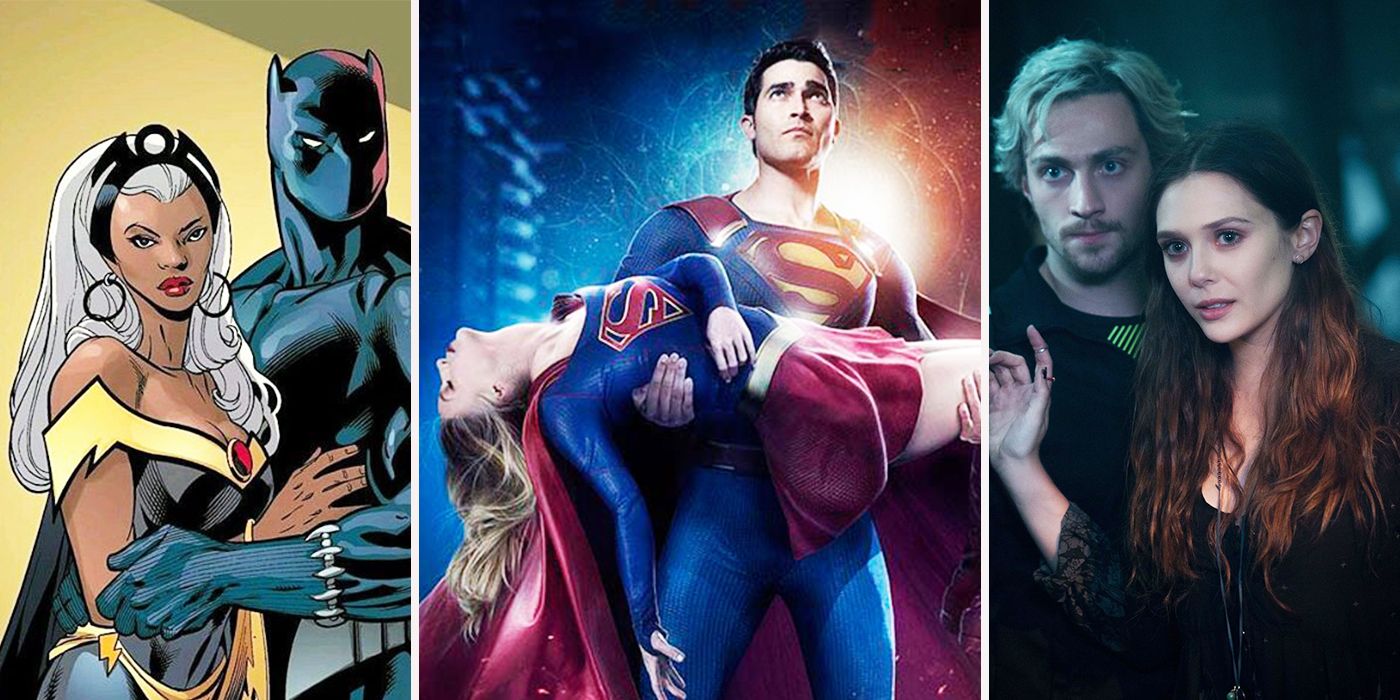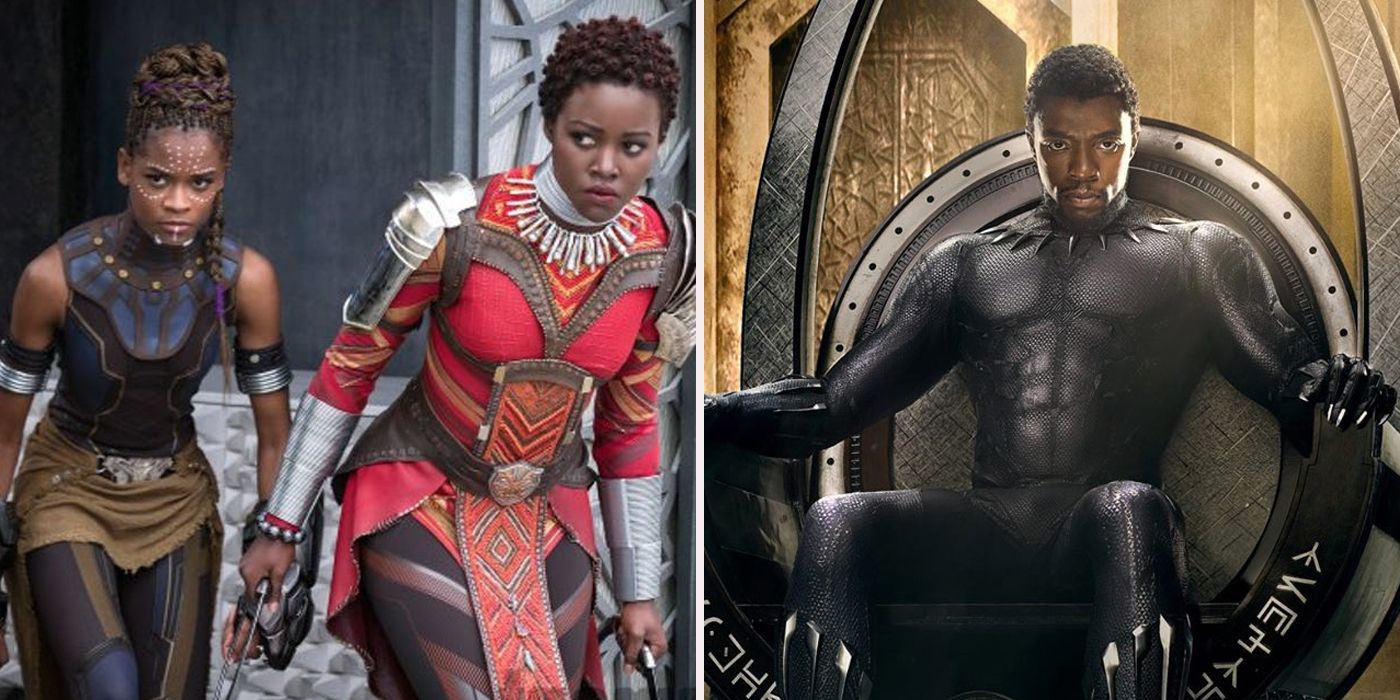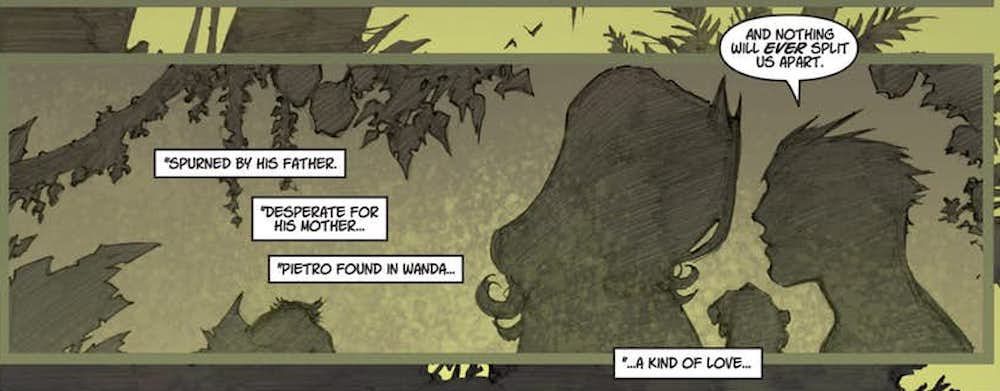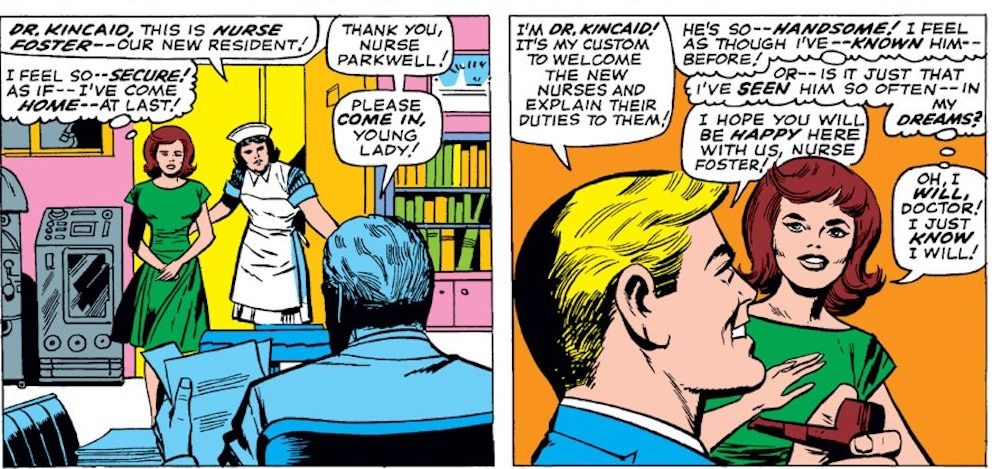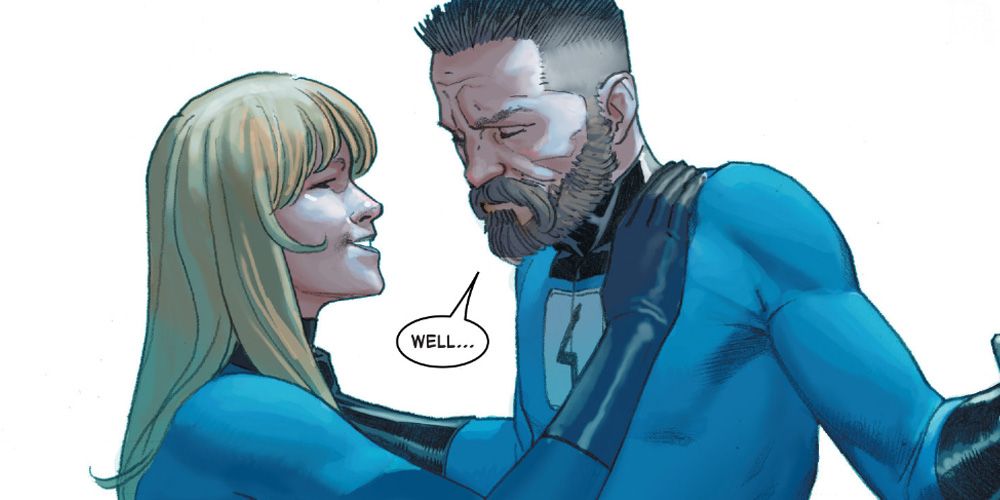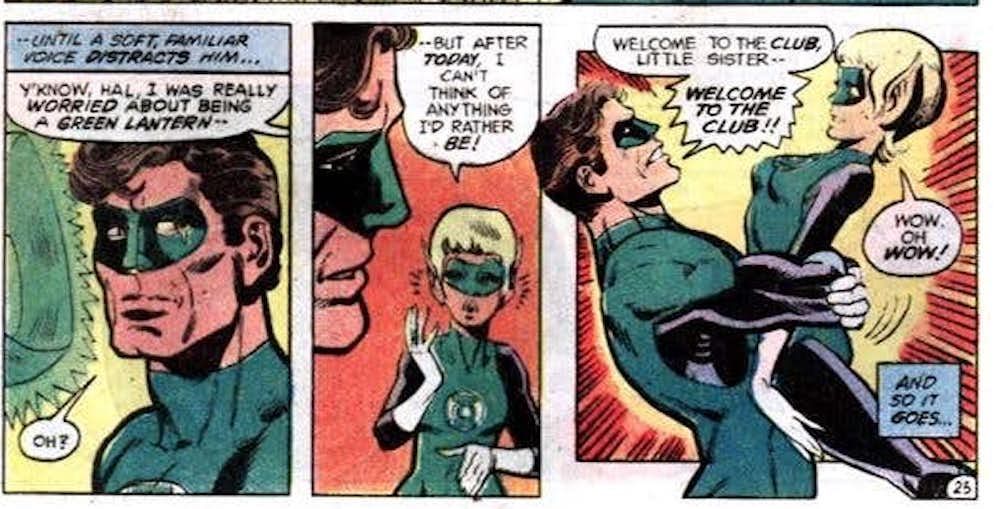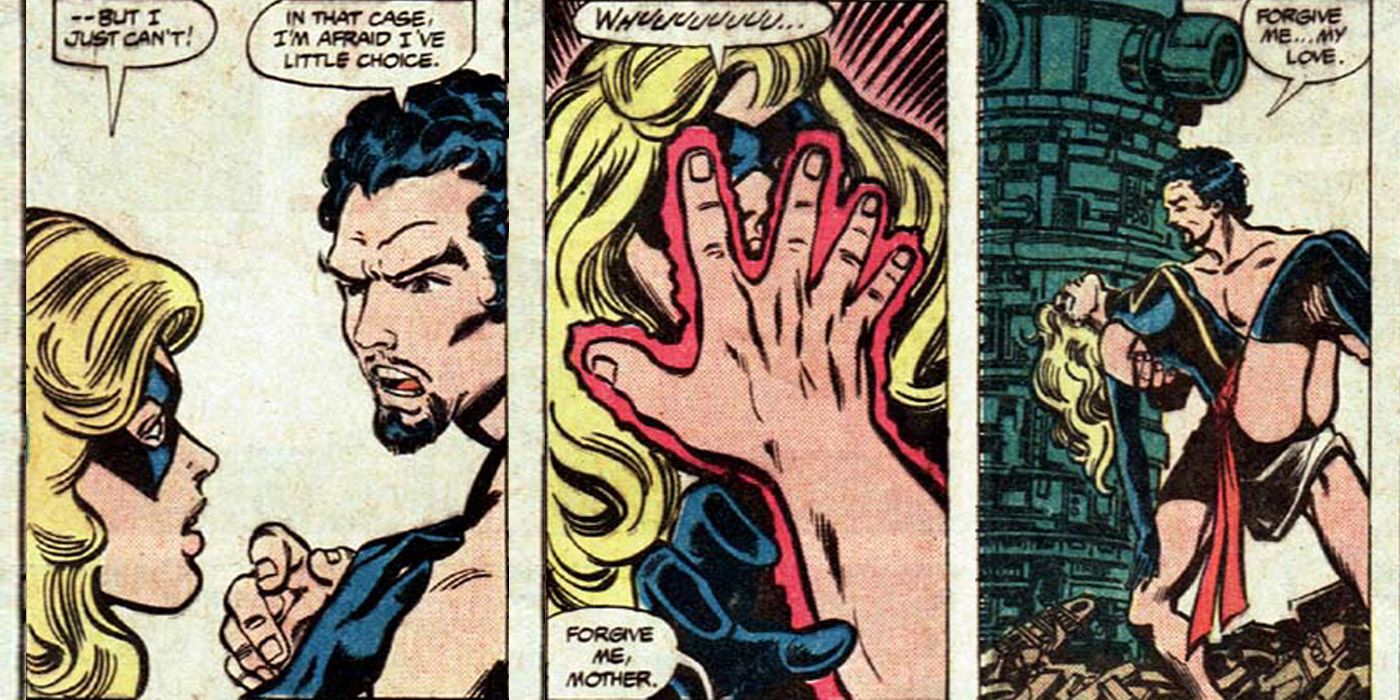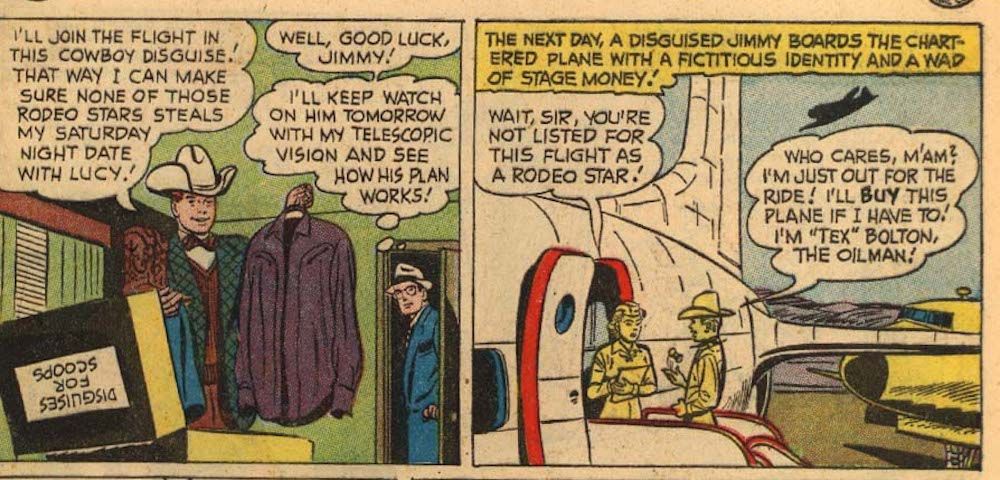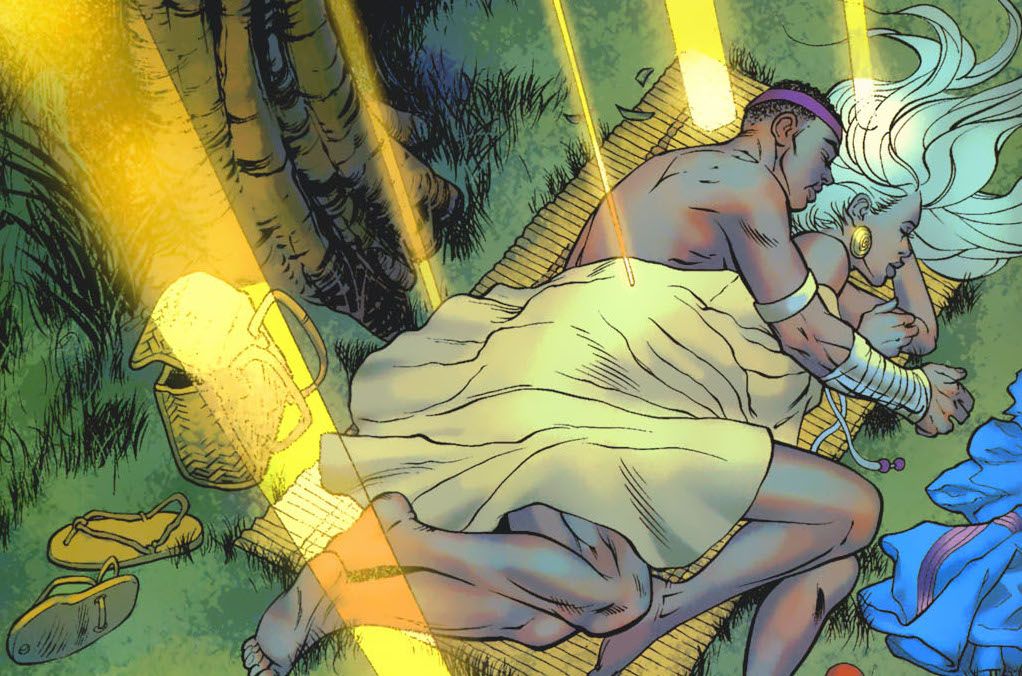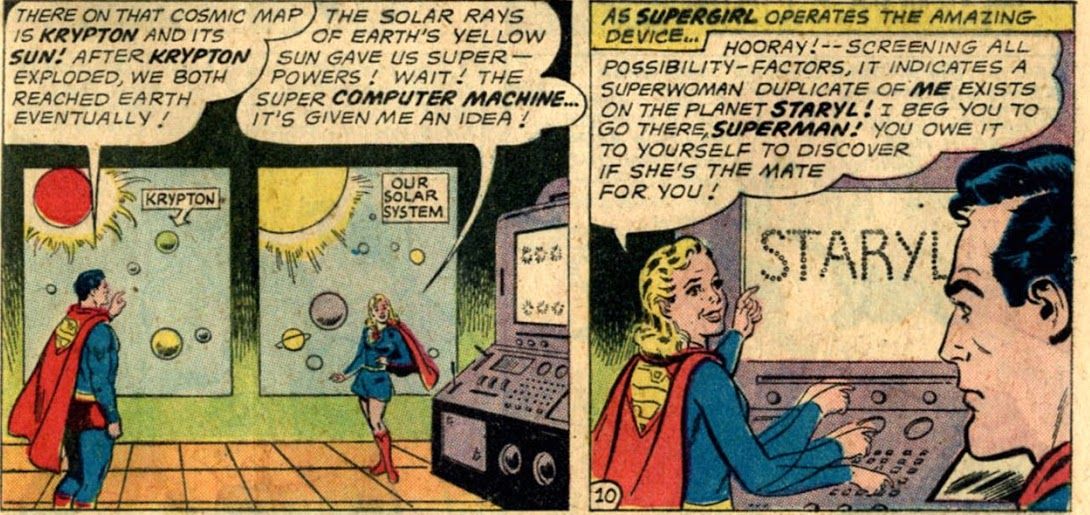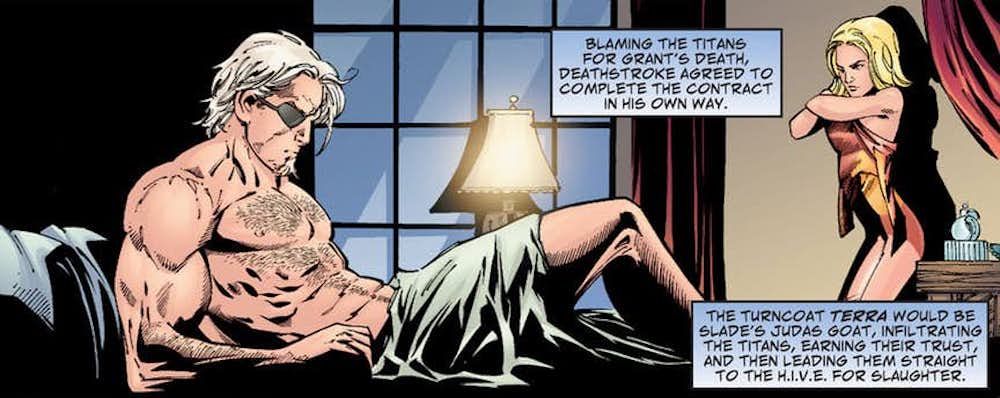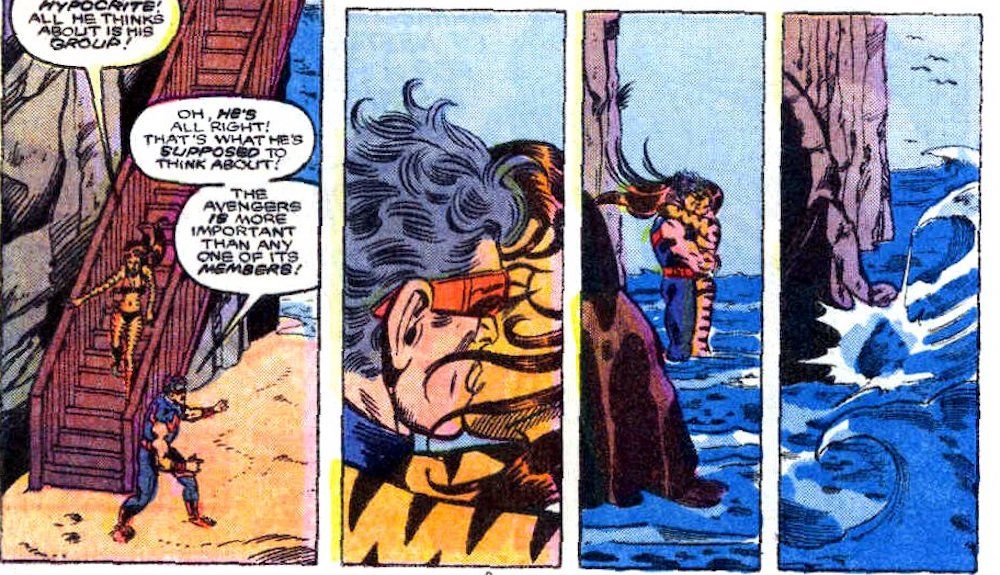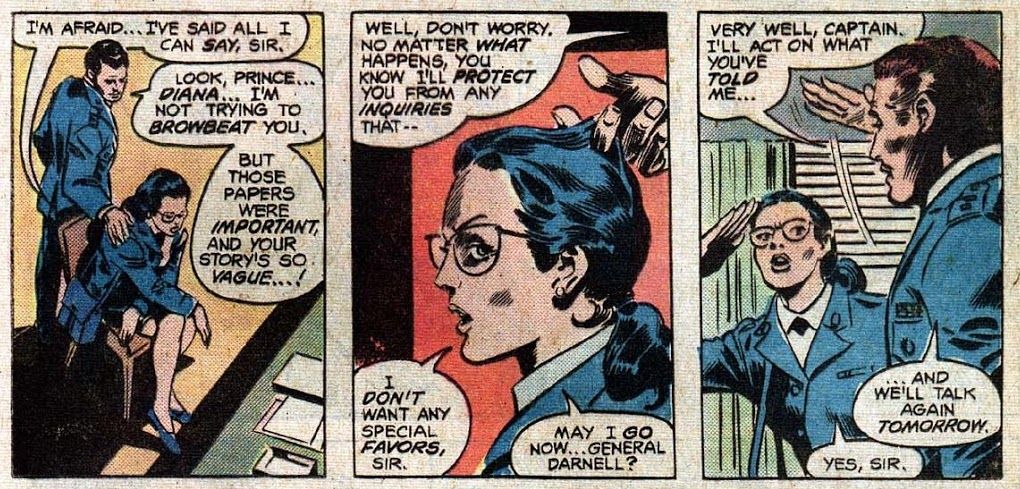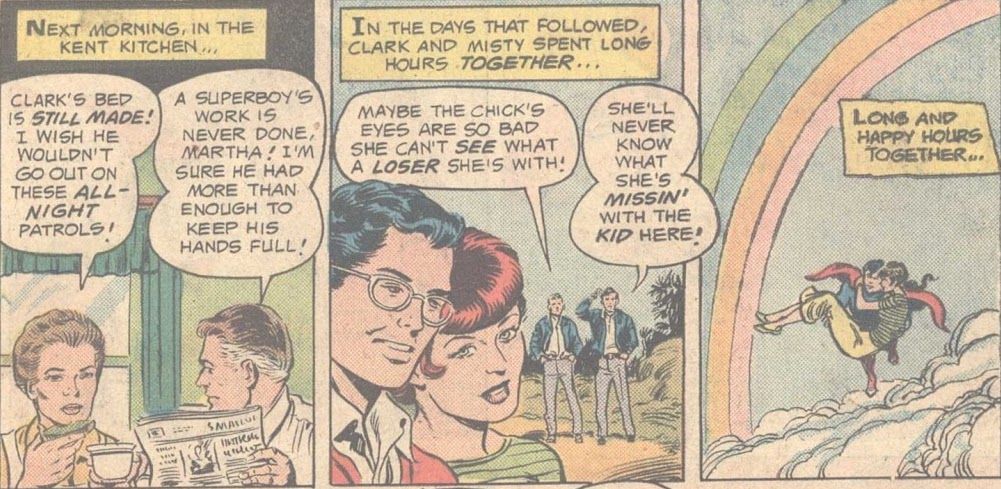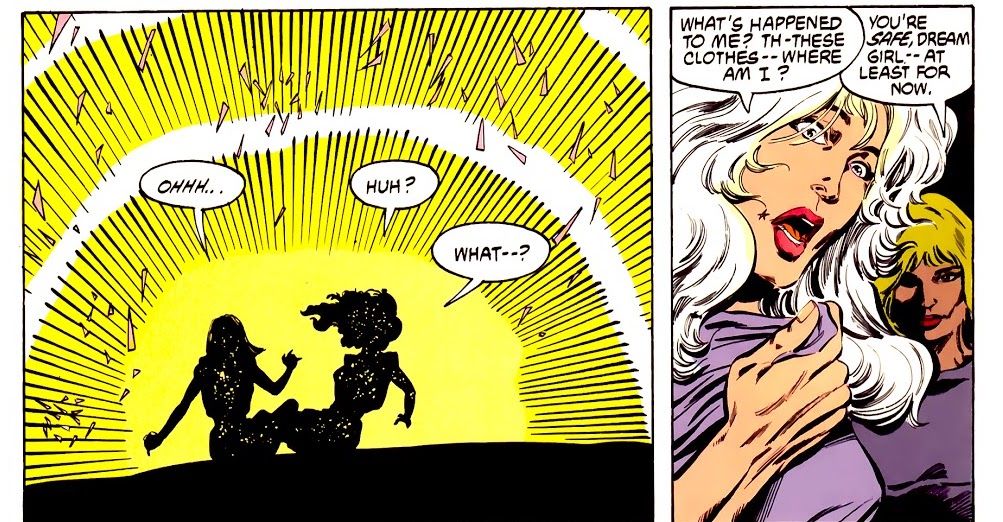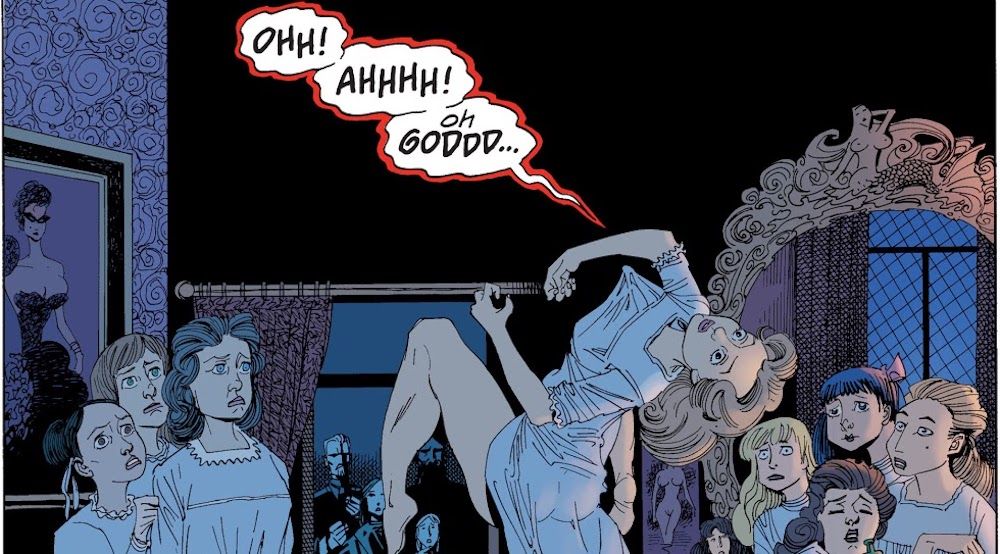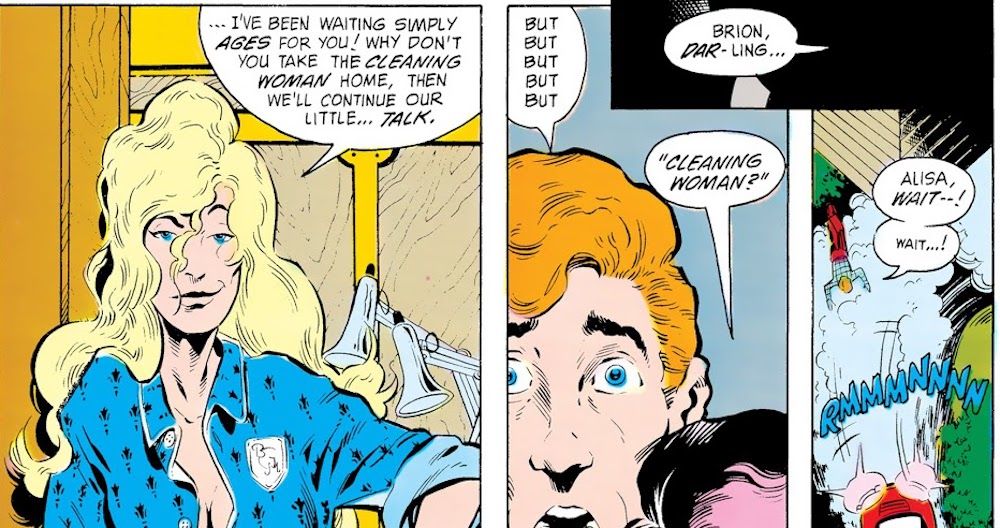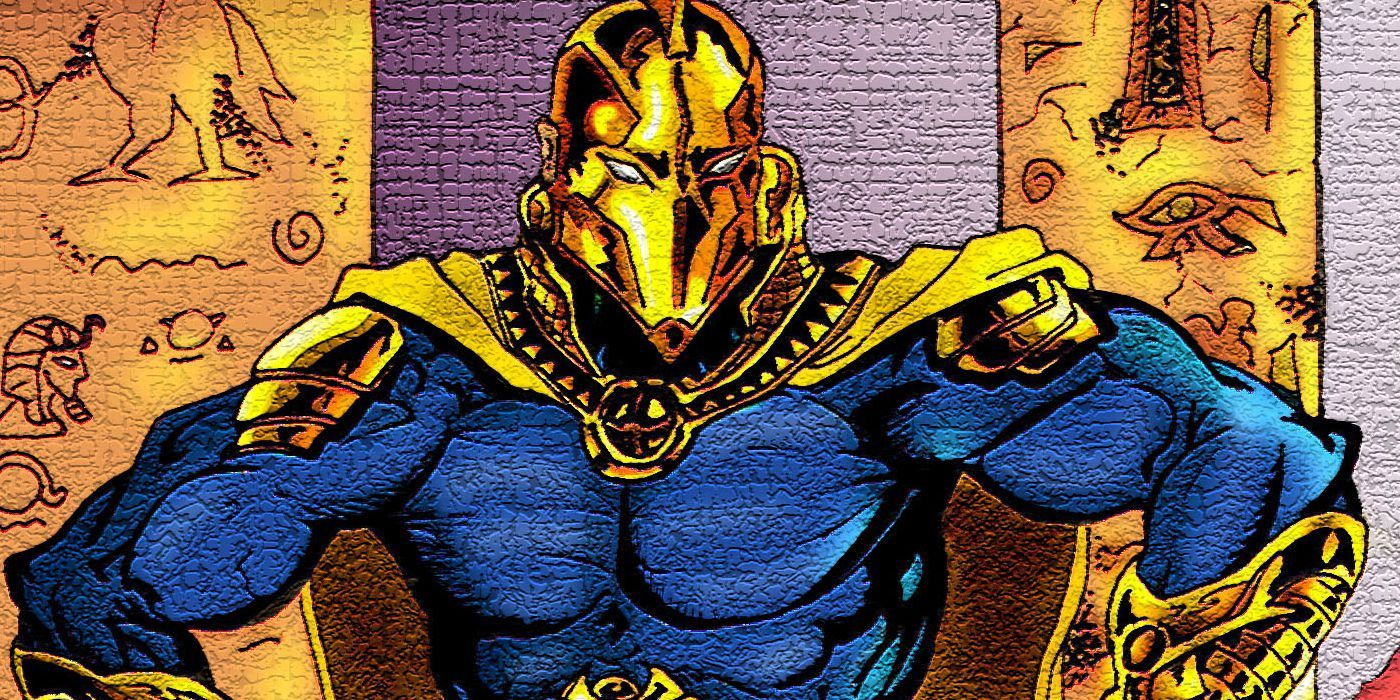There are several reasons some comic-book romances or stories with adult hemes haven’t aged well. Things once taken for granted now look questionable. What once passed as “edgy” now looks creepy. Sometimes writers pushed the envelope to grab eyeballs in a crowded market. Situations that looked unremarkable in, say, 1980, are obviously problematic decades later. Sometimes creative people just have dumb, sexist, cringeworthy ideas.
This is a problem for writers in any medium, but comics creators have special challenges to consider: the ethics of mind-controlled relations, the age of consent for extraterrestrials. Faced with tight monthly deadlines, it’s easy to flunk the challenge.
Here are eighteen examples of romances, relationships in comics that wouldn’t fly today. There were probably people who thought these stories crossed the line back when they came out, but the age of social media makes it much easier to express outrage than it used to be. Even so, the title of this list may be optimistic - some writers are still going to push the envelope the wrong way. But society keeps changing, and with any luck, it’ll change past the worst comics ideas of our past.
Here are 18 Comic Book Romances That Would Never Be Allowed Today.
Black Panther’s Dora Miljae are forbidden to speak to any other man
In Christopher Priest’s memorable Black Panther run. T’Challa revived an old Wakandan tradition: the Dora Miljae. Traditionally each tribe contributed its strongest, finest women to this elite order, which did double duty as potential queens and as the king’s personal bodyguard.
There’s historical African precedent for such a female corps, but Priest added one darker twist: the Dora Miljae can’t speak to anyone outside their ranks except T’Challa. This seems about one step above locking them away in a harem, a rule T’Challa might have lifted — especially as he had no intention of marrying them.
It was particularly hard on Chante Brown, Wakanda-born but Chicago-raised. Because her parents were leaders of the rebel Jabari tribe, she was forced into the Dora Miljae and fought angrily against the restrictions on her life. This is one storyline we surely won't see in 2018's Black Panther movie.
The Wasp and Hank Pym
The debut of Yellowjacket in Avemgers #59 certainly grabbed eyeballs: obsessed with Janet van Dyne, the Wasp, he clobbered the Avengers to kidnap her. Even though Yellowjacket boasted he’d killed her fiancé Hank Pym, Jan agreed to marry him. But why?
The following issue it turned out Yellowjacket was Hank Pym’s split personality, triggered by a lab accident. Hank had been too insecure to set a wedding date; his new personality had no such reluctance. Jan guessed his identity the first time he kissed her and figured hey, who cared if he’s insane as long as he’d finally put the ring on her finger.
While Hank has gotten deserved flak for things like striking his wife, Jan’s rarely gotten the criticism she deserves for this incident. At least a later retcon acknowledged her behavior was less than rational.
Quicksilver and Scarlet Witch
When Mark Millar introduced that Earth’s Quicksilver and Scarlet Witch in Ultimates, he strongly implied that their feelings went beyond ordinary sibling affection. When Jeph Loeb took over as scripter, eventually he made that explicit. Captain America is understandably shocked when he learns about Wanda and Pietro being romantically involved, but one of his teammates informs him that’s just because his “1944 brain” can’t grasp the more sophisticated modern world. Wait, what?
Hawkeye is displeased with the relationship but only because it might be bad PR for the team. Wolverine later describes their relationship as a kind of love Quicksilver could only find with his sister. All things considered, it wasn’t one of the Ultimate Universe’s better developments.
Thor and Dr. Kincaid
Stan Lee and Jack Kirby started Thor out fighting mundane supervillains, but his adventures soon became more cosmic. Perhaps that’s why they wrote Jane Foster out as Thor’s love interest and gave her a happy ending. Too bad it's so creepy.
In Thor #136, Odin gives Jane a chance to become a demigoddess and an acceptable mate for Thor. Things go horribly wrong, so Odin banishes Jane back to Earth; Thor "gets" Sif as a consolation prize. Odin overwrites Jane’s memories so she clearly remembers she’s now working for handsome Dr. Kincaid, and falls in love with him immediately.
It looks suspiciously like Odin gave her a happy ending via a big mental nudge. Perhaps it’s a good thing that although they married, Jane eventually divorced Kincaid off-panel.
Sue and Reed Richards (Silver Age)
Mr. Fantastic and the Invisible Woman are a model relationship, one of the few Silver Age marriages that’s lasted into the 21st century. Fantastic Four #11 introduced one jarring note into the romance: although Reed was at least a decade older than Sue, he declares they’d been in love since they were “kids living next door to each other.”
Lee probably tossed off the line without thinking, as he often did; a later story showed Reed knowing nothing about Sue’s family history despite knowing her since childhood. John Byrne later retconned the squick away, explaining that while Sue crushed on Reed when she was twelve, the feelings weren’t reciprocated. A later Matt Fraction retcon simply eliminated the age difference so there was no question of anything inappropriate.
Hal Jordan and Arisia
Hal Jordan’s relationship with fourteen-year-old Green Lantern Arisia is a good example of how comics can throw in a new wrinkle. They only hook up after her ring makes her an adult woman, but is she “really” adult? Does the aging make it okay?
According to Arisia, fourteen Earth years equals twenty-eight years on her world, so she’s actually an adult anyway. If they’d gone with that there might be no problem, but Hal, John Stewart and the other Green Lanterns keep insisting she’s a teenager. Or at least, she was before the ring made her an adult. Hal then insists it’s case closed as she’s now grown up, but the others aren’t sure.
It’s as if author Steve Englehart wanted to acknowledge the issue, but was overly optimistic about how well he’d handled it. It’s unlikely anyone would try a similar stunt today.
Ms. Marvel and Marcus
In Avengers #197, Ms. Marvel (Carol Danvers back then) comes down with a classic case of paranormal pregnancy: no father and the fetus grows super-fast. When she gives birth, the baby ages super-fast too. It’s actually Marcus, an inhabitant of Limbo who impregnated Ms. Marvel in hopes her giving birth to him would free him from that realm.
Claiming he didn't want to force Carol, Marcus brought her to Limbo and put on a full-court romantic press to win her heart. Plus a little mind control. Just a little, so no problem, right? Writers David Michelinie and Jim Shooter apparently didn’t think so, as Carol and Marcus end up going back to Limbo together.
It’s true that Michelinie was improvising because his original story arc had been nixed by the editors. That doesn’t make the resolution any less squicky.
Jimmy Olsen and Lucy Lane
Even by Silver Age standards, Jimmy Olsen and Lucy Lane weren’t one of the great romances. By 21st century standards, it’s considerably worse than that.
After they first meet in Superman’s Pal Jimmy Olsen #36, Jimmy’s in love. Lucy agrees to a second date, but tells Lois she’ll break it if she gets a better offer. Jimmy learns this and schemes to block any rivals. In subsequent stories, Lucy continues treating Jimmy as her last-ditch option for a date. The only time that changes is if she thinks Jimmy has another girl. Jimmy, no matter how many times he’s treated like dirt, keeps trying to win her.
“Stubborn guy pursues unattainable woman” is an old romance trope, but it only works if readers root for the couple to get together. Jimmy and Lucy were better off apart.
T'Challa and Storm
The 2006 Storm miniseries wants to be a moving exploration of first love and first relations. Too bad it happens when Storm's twelve.
The six-issue arc expands on and retcons T’Challa’s and Ororo’s first encounter. Ororo, a twelve-year-old thief, becomes the target of a South African strike force. T’Challa saves Ororo, who joins him on his trek across Africa. She finds being near her gives her feelings she’s never had before, and at the end of #5, they act on them.
Twelve is way, way young for Storm’s first time. T’Challa is only slightly older, but he says he’s already been laid. Rather than a sweet romance foreshadowing the Storm/Black Panther wedding, it comes off as an uncomfortable story about underage teens hooking up sooner than they should.
Superman and Supergirl
Like Reed crushing on Young Sue, Superman telling Supergirl she’s his dream woman was a tossed-off line in one story. It’s still a bizarre one.
After Supergirl arrived on Earth, Superman functioned as his teenage cousin’s big brother, though an overbearing one. In Action #289, Supergirl attempts to find her cousin his dream woman. In the course of the story, Superman, who’s around thirty, tells his high-school age cousin that if he could pick anyone, it would be her. The only reason for not doing it is that Kryptonian law doesn’t allow first cousins to marry.
The idea of a Superman/Supergirl romance never came up again until Peter David’s 1990s Supergirl series, featuring a non-Kryptonian, somewhat older Supergirl. At the end of the series she goes back in time, replaces Silver Age Kara and winds up marrying Superman.
Deathstroke and Terra
Teen Titans' "Judas Contract" arc was another eyeball-grabber. The superhero Terra, who’s been working with them for a year, turns out to be a spy for Deathstroke, one of their archfoes. With her on the inside, Deathstroke's learned everything he needs to take the Titans down. Oh, and fifteen-year-old Terra also abuses substances and has relations with Deathstroke.
It’s not just this that gives the story its gross-out factor but the way "Judas Contract" puts the responsibility 100 percent on Terra. She’s the bad girl; he just accepted what she offered because it served his own agenda. But that’s why laws exist: men in their forties aren’t off the hook for bedding underage girls just because the girl thinks she's willing.
Deathstroke is not as blameless as the story implies. Happily a more recent retcon puts more of the blame on him.
Tigra and multiple Avengers
Greer Nelson began her superhero career as the Cat, an enhanced woman in a cat costume. When her book folded, she was rebooted into Tigra, a cat-woman who had much more success.
After Tigra joined the West Coast Avengers, the cat side of her nature begins to assert itself. And what that side craves is pleasure. A casual talk with Wonder Man becomes a hook-up on the beach. Talking about it with Hank Pym later, Tigra finds herself jumping him too.
This is another example of how comics raise issues more realistic fiction doesn’t have to deal with. Tigra’s cat half is clearly doing this by choice, but her Greer side just as clearly doesn’t want to do it. Is sleeping with her the equivalent of the Wasp marrying Hank when he’s insane? Or more like someone having relations on impulse and regretting it?
Diana Prince and General Darnell
In the age of #MeToo, would a comic book feature a boss pressing gifts on a secretary who isn’t interested?
From the Golden Age to the Silver Age, General Darnell was boss to both Steve Trevor and Diana Prince. He was quite clearly attracted to Diana, but for the most part he conducted himself properly. But in one Golden Age story, he insisted on presenting her with a diamond clip and suggests he’d like to give her a ring. Given the power differential, that’s not so proper, and might violate military rules, too.
When Diana Prince returned to the military in the late Bronze Age, Darnell returned to the book and again began showing interest. By the mid-1980s end of Wonder Woman’s first series, the writers (as you can see from the image) acknowledged the darker side of this.
Superboy and mind-controlled Mindy
If people wondered about Superboy's first time, they probably didn’t imagine he’d be knocking boots with a hypnotized girlfriend. But DC Super Stars #12 went there.
In a sequel to an old Superboy story, a Kryptonian robot teacher tests whether Superboy has the emotional maturity to become Superman. The final test is when his girlfriend Misty is apparently murdered and Superboy overcomes his desire to kill in revenge.
The teacher then reveals Misty is alive, but she's not really Misty. He hypnotized an ordinary girl to become Superboy’s perfect lover (it’s not shown but strongly implied they’ve been having relations) to set up the test. Of course Silver Age stories often brushed off the implications of mind control, but the implications didn’t usually involve consent.
Hopefully the teacher’s ploy wasn’t Jor-El’s idea, though he’s had plenty of bad ones.
Mind-controlled Dream Girl and Atmos
Newsflash: pursuing someone you hooked up with while they were hypnotized is not romantic. A Legion of Super-Heroes plotline involving Dream Girl and a new character, Atmos, largely ignored that.
The two of them met after the master mesmerist Universo enslaved Earth, then stashed several mesmerized superheroes in an off-world prison camp. After Saturn Girl frees herself and her teammates, Dream Girl discovers Atmos thinks of her as a close friend. Very, very close. So close, Dream Girl’s suddenly happy she can’t remember much.
Atmos, however, remembers enough to try joining the Legion and restarting the "romantic relationship," as some people insist on calling it. While the story makes it clear he’s pushing things, it’s more like ordinary pushy (Dream Girl tells him to take things slow) than pushing after possibly banging someone who was in a hypnotized trance.
Invisible Man and multiple girls
Alan Moore wrote an awful lot of assault into The League of Extraordinary Gentlemen. The stories of a band of 19th century adventurers (Alan Quatermain, Mr. Hyde, Captain Nemo) becoming a superhero team include multiple assault and attempts, but the creepiest is easily in the original story arc.
Gathering her team of champions, Mina Murray visits a girls’ school where several teenage girls (all characters from old novels) have become inexplicably pregnant. It turns out that H.G. Wells’ Invisible Man has been assulting all the girls, but because they’re Victorian and clueless, they assume they're immaculate conceptions.
Well, no, it’s actually horrifying. Some fans argue Moore’s story is meant as satire, pastiche, or meta-commentary, but on the printed page it just looks like underage girls getting assaulted.
Geo-Force and Halo
It wouldn't be hard to fill out this column with just teen/adult romances from various comics. Halo/Geo-Force in Batman and the Outsiders is yet another example, and one without Halo magically aging to give it a fig leaf.
Halo, a teenage amnesiac was a high-schooler; Geo-Force was a college student and apparently in his twenties (Batman and the other men on the team treat him as a peer, not a kid). After they successively ruin each other’s big dates, they suddenly find themselves kissing, and launch a relationship, though keeping it secret from the team.
It’s never drawn the attention of Hal/Arisia because they didn’t appear to go beyond making out, and it didn’t last long. Halo left the team for a while, and by the time she returned, their passion had cooled. We can all be happy for that.
A ten-year-old boy and his stepmother become Doctor Fate and fall in love
The late-1980s Doctor Fate series was another case of rationalizing a child/adult "romance" with magical aging.
Kent Nelson has left the mortal plane and Doctor Fate is now a Firestorm-like composite of Eric Strauss — a ten-year-old magically aged to young adult — and his widowed stepmother, Linda.
Linda admits in one story that she “used to feel things” for Kent that alarmed her, but once he became an adult that made her feelings okay. Linda is aware, though, that emotionally, Eric still feels like a preteen boy.
Linda and Eric have lived through multiple incarnations together: their love Linda feels goes back long before they met in the current lives. Even so, the statutory overtones make a sour note in an otherwise delightful series.
---
This barely scratches the surface of comics' problematic romances. Tell us the ones we didn't include in comments.

